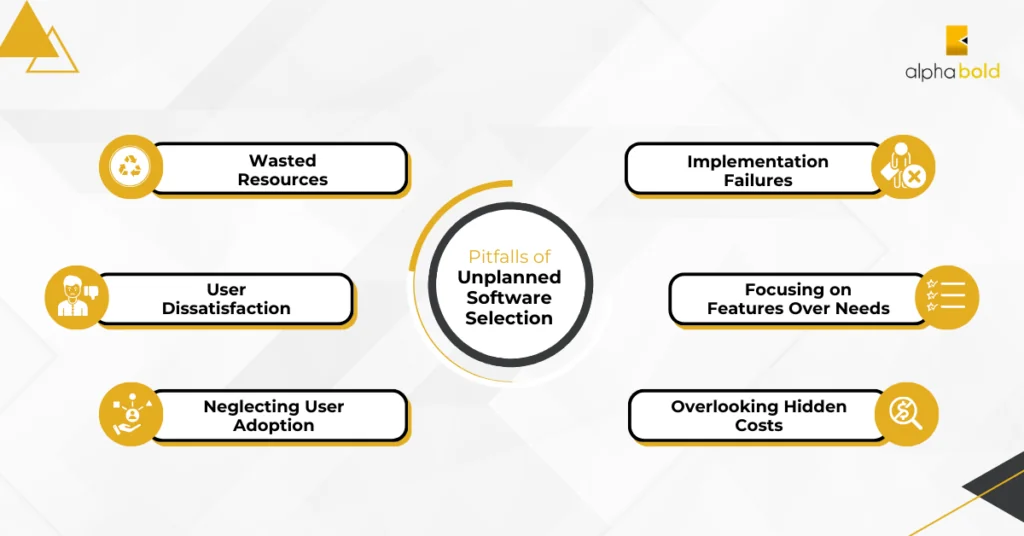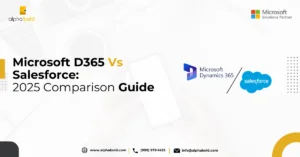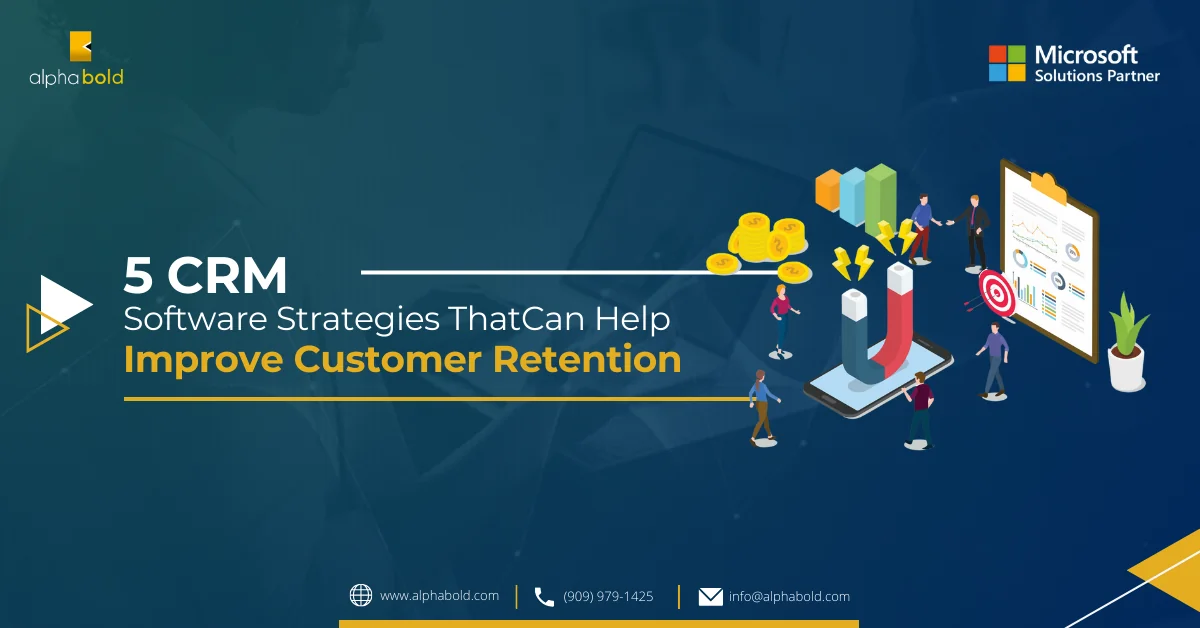Introduction
As a decision maker, you understand the pressure of selecting the right software and recognize it is no small feat. With a vast array of options available, each promising increased efficiency and productivity, the decision can feel overwhelming. Choosing the wrong tool, however, can lead to wasted resources, frustrated users, and implementation failures. Studies by Panorama Consulting Group show that companies with a guided software selection process experience a 38% higher implementation success rate. This statistic underscores the importance of a structured approach to software selection, one that goes beyond simply comparing features and functionalities.
This guide will equip you with the key steps involved in a successful software selection process. By following these steps and considering the crucial aspects of each stage, you’ll be well on your way to selecting the perfect software solution for your business needs.
The Pitfalls of Unplanned Software Selection

Imagine selecting a superhero for your team based solely on their flashy costume, only to discover they lack the powers you truly need. Choosing software without proper planning can lead to similar disappointments. While the promise of increased efficiency and productivity might be enticing, rushing into a decision can have significant downsides:
- Wasted Resources: Investing in software that doesn’t align with your needs leads to wasted time, money, and resources. Without a clear roadmap, you risk implementing a solution that doesn’t address your core challenges.
- Implementation Failures: Software that doesn’t seamlessly integrate with your existing systems or workflows can lead to a bumpy implementation process. This can disrupt operations and leave users frustrated.
- User Dissatisfaction: If the chosen software is complex, lacks intuitive functionalities, or doesn’t meet user expectations, adoption rates will plummet. Disgruntled users become disengaged, hindering the software’s potential impact.
Beyond these general risks, companies often fall prey to specific mistakes during software selection:
- Focusing on Features Over Needs: Getting dazzled by a software’s bells and whistles can distract you from identifying features that truly address your company’s pain points.
- Neglecting User Adoption: A successful software implementation hinges on user buy-in. Failing to involve key users throughout the selection process and neglecting training can lead to resistance and hinder adoption.
- Overlooking Hidden Costs: The initial licensing fees might seem attractive, but neglecting to factor in implementation costs, ongoing maintenance, and potential training expenses can lead to budget surprises down the road.
By avoiding these pitfalls and following a structured selection process, you can significantly increase your chances of choosing the right software solution – a superhero, not a sidekick – for your business needs.
Are you Currently Evaluating Software?
AlphaBOLD consultants can offer you software agnostic selection advisory to help you make a data-informed decision on your next software investment.
Request a ConsultationHow to Select Software: Defining Your Needs Before Diving In
Imagine building a house without a blueprint. The outcome would likely be chaotic and potentially unusable. Similarly, selecting software without a clear understanding of your business needs is a recipe for disaster. Before diving into the exciting world of software options, take a step back and focus on building a strong foundation:
Defining your Business Goals & Pain Points:
What are you hoping to achieve with new software? Is it streamlining operations, improving customer service, or gaining better data insights? Identifying your overarching goals helps guide the selection process by ensuring you prioritize solutions that address them effectively.
Equally important is pinpointing your current pain points. Are manual processes slowing you down? Is outdated software hindering collaboration? Understanding these challenges allows you to seek software solutions with functionalities that directly address them.
Needs Assessment & Gap Analysis:
A thorough Needs Assessment goes beyond simply listing desired features. Delve deeper to uncover your company’s unique workflows, user requirements, and data integration needs. Through Gap Analysis, compare your current software landscape with your identified needs. This analysis reveals areas where new software can bridge the gap, improve efficiency, and empower your team.
By taking the time to define your goals, identify pain points, and conduct a comprehensive Needs Assessment and Gap Analysis, you establish a solid foundation for a successful software selection process. With a clear understanding of your “must-have” functionalities and desired outcomes, you’ll be well-equipped to evaluate potential solutions and make informed decisions.
How to Select Software: Software Research & Evaluation:
With a strong foundation in place, it’s time to explore the software landscape. Imagine a vast library filled with countless books, each promising knowledge and solutions. Your goal is to identify a select few that perfectly align with your research needs. Similarly, the software selection process involves sifting through numerous options to shortlist a handful that meet your specific requirements and budget.
Here’s what you need to do during this crucial stage:
Shortlisting the Contenders: Conduct thorough market research to identify leading software solutions that possess the functionalities you outlined during Needs Assessment. Consider factors like industry best practices, user reviews, and budget constraints to create a shortlist of strong contenders.
Vendor Selection & Software Comparisons: Don’t be fooled by marketing materials. Go beyond surface-level comparisons and conduct in-depth evaluations of shortlisted software solutions. Meticulously evaluate features, pricing models, and how seamlessly they integrate with your existing systems.
By taking a data-driven approach and dedicating time to research, you can ensure your shortlist consists of solutions with the potential to become the perfect fit for your business needs and budget. This focused approach saves you valuable time and resources, allowing you to delve deeper into the most promising software options.
Hands-On Exploration: Getting Behind the Wheel
Imagine selecting a car based on a brochure and a few test drives around the block. While it might seem sufficient, a true understanding of a car’s performance and functionalities comes from taking it for a spin on various terrains. Similarly, software selection benefits greatly from hands-on exploration.
Here’s where Proof-of-Concepts (POCs) and demos come into play:
Proof-of-Concepts (POCs): A POC allows you to test-drive a software solution in a controlled environment with your own data. This provides a valuable opportunity to experience the software firsthand and assess its ability to address your specific needs and workflows. During a POC, you can uncover potential roadblocks or limitations that brochures and demos might not reveal.
Demos: Software vendors often offer demos that showcase a solution’s functionalities. While demos provide a good starting point, they typically follow a scripted path. By combining demos with POCs, you gain a more comprehensive understanding of the software’s capabilities and its suitability for your unique requirements.
Are you looking for the right CRM software for your company? Read why making the right CRM choice is paramount: The Comprehensive Guide to CRM Software.
Navigating Software Demos?
AlphaBOLD can help you navigate demos and help you define clear objectives, select the right processes that mtter to you, and help you evaluate features.
Software Selection AdvisoryMaking an Informed Decision: Beyond the Checklist
With a shortlist of promising software solutions in hand, it’s tempting to rush into a decision. However, this is a critical juncture that requires careful consideration. Choosing the right software is a long-term investment, and a well-informed decision can significantly impact your business success.
Here’s how to ensure you make an informed decision:
Establish Clear Selection Criteria: Don’t rely solely on features lists or flashy demos. Develop a set of clear selection criteria that prioritize functionalities crucial to your business needs. This might include factors like ease of use, scalability, security features, and integration capabilities. Assign weights to each criterion based on its relative importance to your specific goals.
Weighted Evaluation Process: Evaluate each shortlisted software solution against your established selection criteria. Don’t simply check off boxes. Use a weighted scoring system to assign points based on how well each solution fulfills each criterion. This data-driven approach helps identify the software that best aligns with your overall needs and priorities.
Cost-Benefit Analysis: The sticker price isn’t the only cost to consider. Conduct a comprehensive Cost-Benefit Analysis (CBA) that factors in not just licensing fees, but also implementation costs, potential training expenses, and ongoing maintenance charges. Equally important is estimating the Return on Investment (ROI) you expect from the software. A strong CBA ensures you understand the total financial impact of your software selection decision.
How to Select Software: Long-term Considerations
While selecting the right software is crucial, the journey doesn’t end there. A successful software implementation hinges on considering long-term factors like ongoing support and maintenance. Here’s why these aspects deserve careful consideration:
Implementation Support: The initial software purchase is just the first step. A smooth and efficient implementation process is essential for maximizing the software’s potential. Look for vendors who offer comprehensive implementation support, including data migration assistance, user training, and system configuration.
Ongoing Maintenance: Software requires ongoing maintenance to ensure it remains secure, up-to-date, and functioning optimally. Factor in the cost of ongoing maintenance plans or support subscriptions when evaluating software solutions.
By neglecting these long-term costs, you might end up with a software solution that becomes a burden to maintain or integrate with your existing systems.
Bonus read: A Guide to the Different Types of Managed IT Services.
Conclusion
Choosing the right software is a critical decision that can empower your team, streamline operations, and propel your business forward. By following a structured and data-driven selection process, you can significantly increase your chances of selecting the perfect software solution – a superhero, not a sidekick – for your unique needs.
Here’s a quick recap of the key steps for how to select software solutions, covering the essentials of the process:
- Building a Strong Foundation: Define your business goals, identify pain points, and conduct a Needs Assessment and Gap Analysis.
- Software Research & Evaluation: Shortlist potential solutions through market research and in-depth comparisons.
- Hands-on Exploration: Leverage POCs and demos to experience the software firsthand and assess its suitability.
- Making an Informed Decision: Establish clear selection criteria, conduct a weighted evaluation process, and perform a Cost-Benefit Analysis.
- Considering Implementation & Support Costs: Factor in the cost of implementation support, ongoing maintenance, and managed services.
While this guide provides a roadmap for navigating the software selection process, partnering with a software selection consultant like AlphaBOLD can offer significant advantages. Our team of experts possesses in-depth knowledge of leading software platforms and a proven methodology to guide you through every stage of the selection process. We can help you:
- Define your selection criteria and objectives.
- Shortlist and evaluate the most relevant software solutions.
- Facilitate POCs, demos, and vendor negotiations.
- Ensure a smooth implementation and provide ongoing support.
By leveraging our expertise and data-driven approach, you can make a confident and informed software selection decision that maximizes the value of your investment and propels your business towards success. Don’t hesitate to contact AlphaBOLD today to learn more about how we can help you unlock the full potential of technology through a successful software selection process.
Explore Recent Blog Posts








